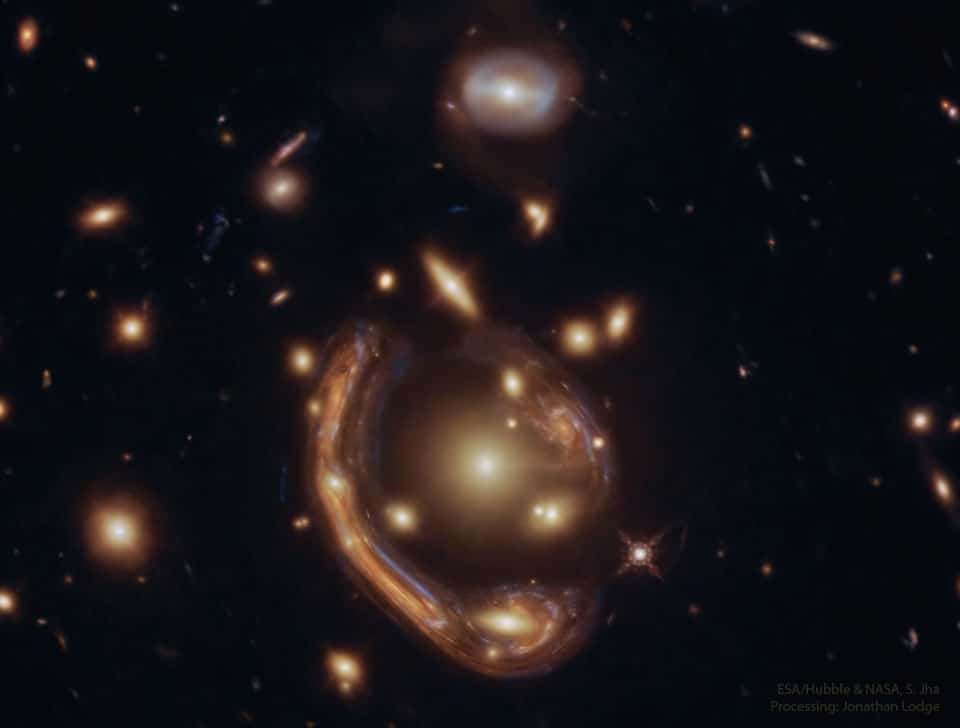It is believed that more than 80% of the universe is made up of dark matter. But what exactly is it? It is not easy to tell because it is completely invisible. A new look at Einstein’s rings sheds light.
We only know that dark matter exists because we can observe its indirect effects on stars and galaxies. The motions of those galaxies can only be consistent with gravity and relativity if there is such a thing as dark matter. But what exactly is not clear at all. Although there are some conditions that dark matter must meet: it has mass, it is present in large quantities in all galaxies, it cannot be detected while it is diffuse, that is, it cannot clump together to form a celestial body. Moreover, it is suspected that it is related to a hitherto unknown elementary particle.
halo of dark matter
To learn more about dark matter Watch the researchers affiliate University of Hong Kong The bending of light under the influence of gravity.
Most of the distant galaxies we can observe appear to be surrounded by halos of dark matter. But because the mysterious substance does not emit, absorb or reflect light, it is extremely difficult to pinpoint it precisely.
Moving forward, scientists have come up with two now-driving hypotheses: dark matter is composed of relatively heavy particles called “weakly interacting massive particles,” or WIMPs. The other option is that these are very light particles called axions. In theory, WIMPs behave like discrete particles, while axons behave more like waves.
A distorted view of reality
It has been difficult to say which of these two options makes more sense, but the bending of light around distant galaxies now provides intriguing clues. When light travels through the universe and passes a large object, such as a galaxy, it bends because – according to Einstein’s theory of relativity – the object’s gravity distorts the space and time around it.
This means, for example, that when we look at a galaxy far away, we get a distorted image of other galaxies behind it. If this occurs in a perfect line, the light from the galaxy can be seen to circle around the nearest galaxy.
Einstein actually predicted it
This distortion of light is also called gravitational lensing gravitational lens The circles of light that can form in this way are called Einstein’s rings, so named because Einstein predicted their existence in 1936. By studying the distortion of these rings, astronomers can learn more about the properties of the halo of dark matter around the nearest galaxy.
And that’s exactly what the Hong Kong researchers did. They looked at several systems where multiple versions of the same object were visible in the background around a foreground galaxy, with a particular focus on HS 0810+2554.
Still the interlocutor
Using detailed models, they looked at what the images would look like if the dark matter was made of WIMPs versus what they would look like if the matter was made of axions. The WIMP model didn’t look much like the real photos, but the axion model accurately reproduced all of the system’s features. So the conclusion is that axions are the most plausible candidate for dark matter.
Confirm previous search
This new study builds on previous research that also pointed to axions as the most likely form of dark matter. Although this study will not end the debate about the nature of dark matter, it does provide new opportunities for testing and experimentation. This allows future observations of gravitational lens They are used to further investigate the wave-like nature of axions and possibly determine their mass.
A better understanding of dark matter is something scientists have been searching for for a long time. It has implications for what we know about particle physics and the early universe. It can also help us better understand how galaxies form and change over time.







